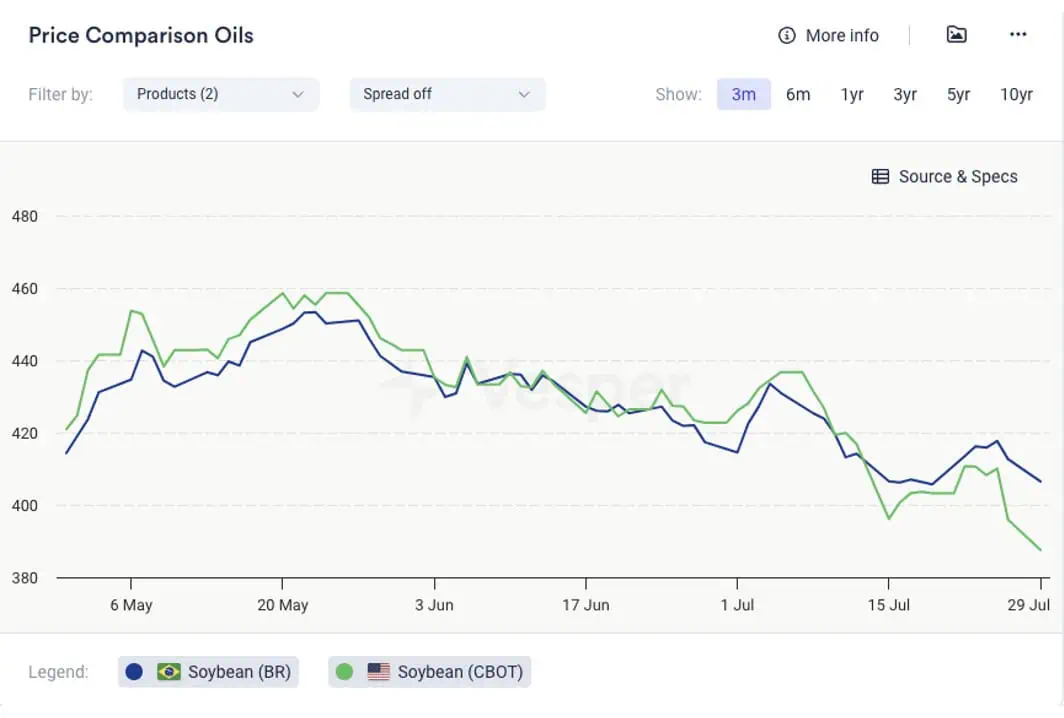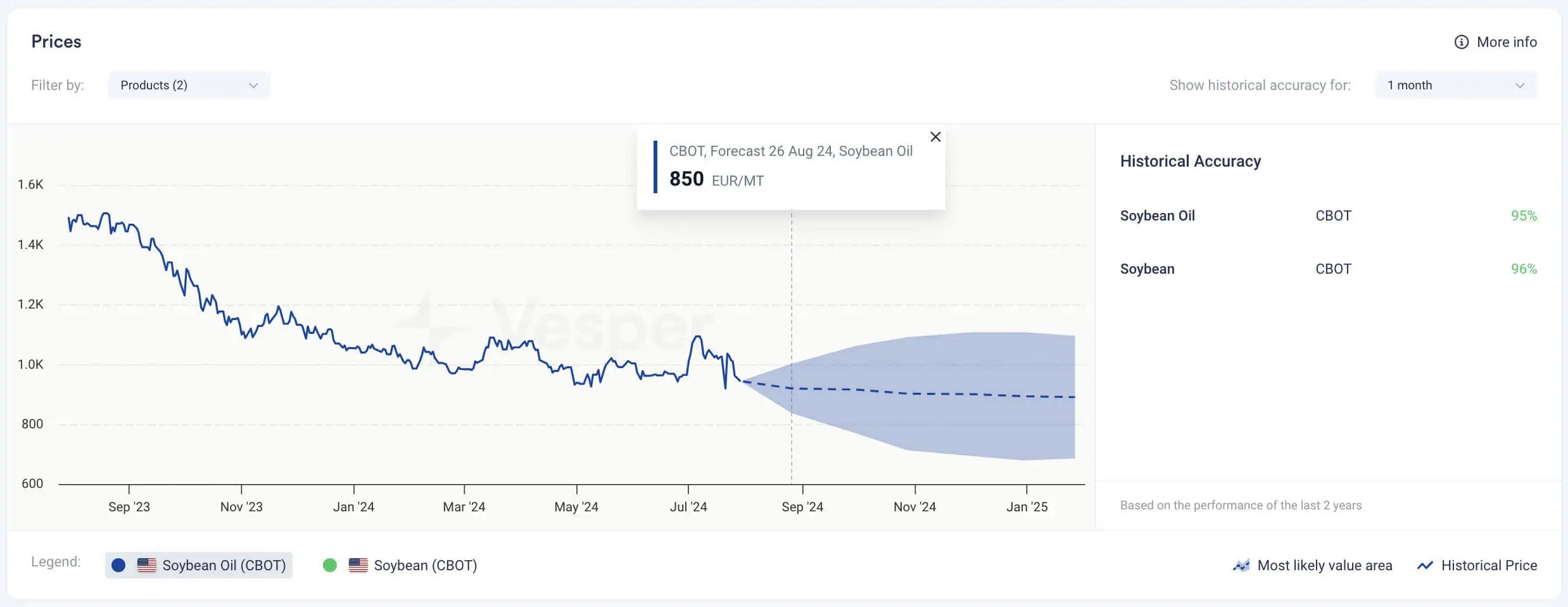As we enter a crucial phase for the development of US soybeans, weather news in the United States is causing volatility in the CBOT soy complex market, which in turn affects other vegetable oils and seeds. Additionally, news from the Middle East is contributing to volatility in Brent Crude Oil prices.
How? The positive weather news and the decline in Brent Crude Oil prices led to a significant decrease in CBOT bean oil and bean prices, as well as Brazil bean prices (see Figure 1). The Soybean Oil (Aug 24) settlement price (CBOT) decreased to €869 | $944/mt (2024-07-29) from €951 | $1036/mt on 2024-07-22.

Figure 1: CBOT and Brazil Soybean Price Benchmarks (USD/mt)
Last week’s anticipation of hot weather in the US Midwest shifted to relief as forecasts announced the soon arrival of rains in the region. The USDA rated 67% of the nation’s soybean crop in good to excellent condition on Monday, down 1% from a week ago and in line with trade expectations.
The Brent Crude Oil benchmark decreased by 3% since the previous report to $79.78/barrel after Israeli officials said they wanted to avoid dragging the Middle East into an all-out war while responding to a deadly rocket strike in the Israeli-occupied Golan Heights over the weekend.
A downward trend was also observed in the Vesper Argentina Forward Price Index for Crude Soybean Oil, which decreased to €830 | $901/mt (FOB Up River, Sep) (2024-07-26) from €893 | $973/mt on 2024-07-19. The Argentinian benchmark was pressured by the lower CBOT soy complex. NABSA reported that from July 1st to 23rd, Argentina exported 389,000 mt of soybean oil, which is 55% more than in 2022 and 2023. The demand for SBO remains strong as prices are still considered acceptable for customers. India has been actively purchasing, motivated by concerns over potential import tariff increases (which didn’t materialise).
What is Vesper’s AI-price forecast predicting?
Vesper’s machine learning model anticipates a slightly bearish price trajectory for CBOT soy oil in both the short and longer term, see Figure 2.

Figure 2: Price forecasts for CBOT Soybean Oil
In the short term, it’s challenging to agree or disagree with the model projections due to the current market volatility. Soybean prices remain volatile due to U.S. elections and weather news. Geopolitical factors influence mineral oil markets. The outlook for sunflower and rapeseed crops is uncertain regarding their sizes. India might revise import duties, adding to the uncertainty. If supply remains ample and U.S. conditions stay favourable, the market is likely to be pressured.
“While the near-term direction of the market should continue to be dictated by overall positive crop conditions in the U.S., the mid/long term price movements remain uncertain. Another factor to consider is the market’s expectations/reactions to the USDA’s first state-level yield and production outlooks of the season scheduled to be released on 12 August, which could potentially impact short-term price movements,” said one source.
Market sentiment diverges from the longer-term ML outlook, suggesting that a potential shortage of sunflower seed and rapeseed supplies, coupled with an uncertain recovery in palm oil production, might offset a soybean surplus and push prices higher. Also, markets expect to see some additional demand for U.S. soybean oil from Sustainable Aviation Fuel (SAF) producers. Future price increases might also arise from potential U.S. tariffs on used cooking oil.
Discover More with Vesper
Unlock the power of Vesper’s AI-driven price forecasts for a variety of products with a free 14-day trial.





